WAIS is literally in the middle of nowhere. About 700 miles to the South Pole, about 700 miles to McMurdo. The only solid "permanent” structure is the Arch, the recently built high tech drilling and ice core handling building.
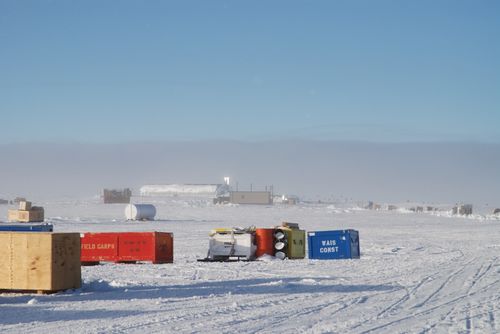
WAIS Arch and Supplies
The camp is only occupied from late Oct until the beginning of Feb. It is a primarily a collection of large Quonset style tents similar to what you see in MASH TV reruns.
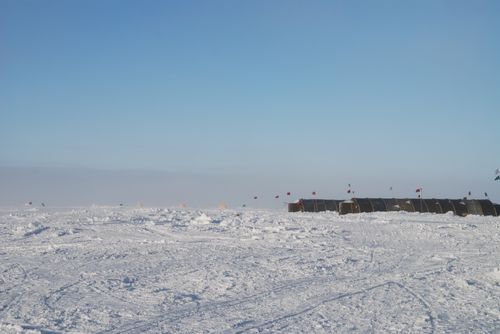
Sleeping James Ways.
The Galley (dining hall),
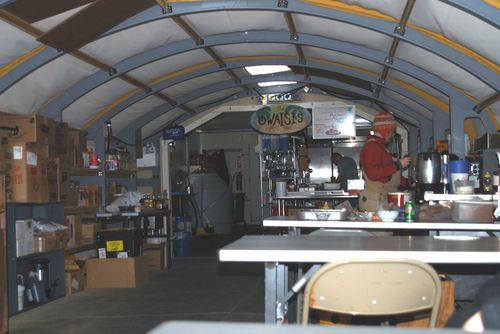
Galley and Kitchen
a medic tent, the science "lab” and the Rec. area are set up in some of these tents.
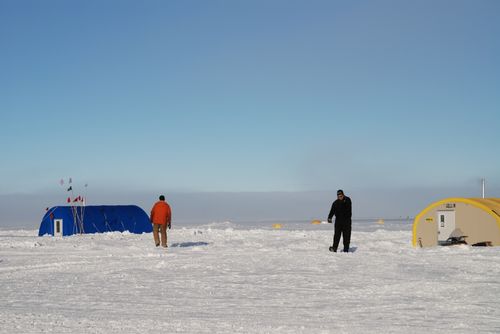
WAIS
There is also a "tent city” of mountaineering tents. A couple of the large tents are set up with cots for sleeping but most people (as did I) just pitch a mountaineering tent out on the snow.
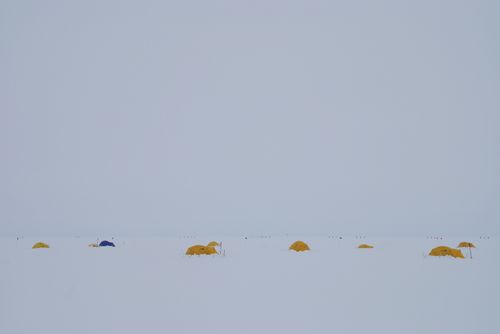
WAIS Tent City
During the peak of the season there were approximately 60 people at WAIS. But when we arrived they were in the process of taking the camp down for the winter. While we were there the tents began to be deconstructed. During the next week everything left at WAIS will be stacked on top of large berms of snow so that the equipment will not be buried under the 3 feet of snow that accumulates here over the winter.
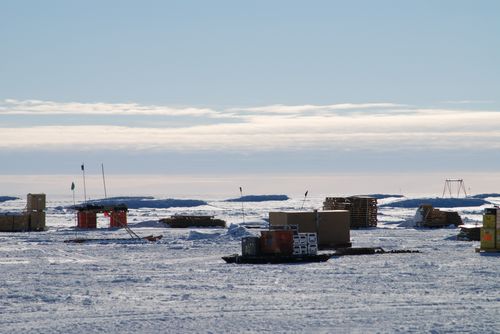
Storage Berms
To get water for camp, snow has to be melted. A generator produces electricity. Although there is a shower, snow has to be melted and heated. The restrooms are outhouses.
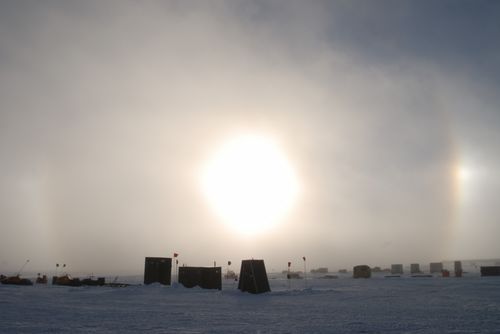
Where You Put Human Waste at WAIS
The camp was set up primarily for the ice core drilling project, but it is also a staging area for other research projects around West Antarctica. Several major science projects are just beginning in the area to try and understanding the impacts of global warming on this huge ice sheet and the impacts of the ice sheet on global climate. I was fortunate to get to visit with a number of scientists who are working on these projects.
This region is very difficult to study because of its remoteness and the extreme weather. George has been talking to other scientists about putting in additional weather stations in the area to improve forecast for the region. WAIS is a very difficult place to get into and out of because it is so far from anywhere and weather can shut flights down for weeks. I talked to people who were stranded here for several weeks because no flights could get in our out, fortunately that did not happen to us. We had very good weather although a bit cold and windy at times, but nothing compared to December when they had a storm (check out Brandon's pics and reports from Dec.- a PolarTREC teacher who was there) that had conditions so bad that you could not see the tent beside the galley, which was only about 20 feet away. There are no indoor toilets at WAIS and so during the worst of the storm nobody was allowed to go outside to the outhouse. For a bathroom, a bucket was set up in the corner. Later when the storm had subsided you were allowed to go to the outhouse, but only in groups of two.


Comments